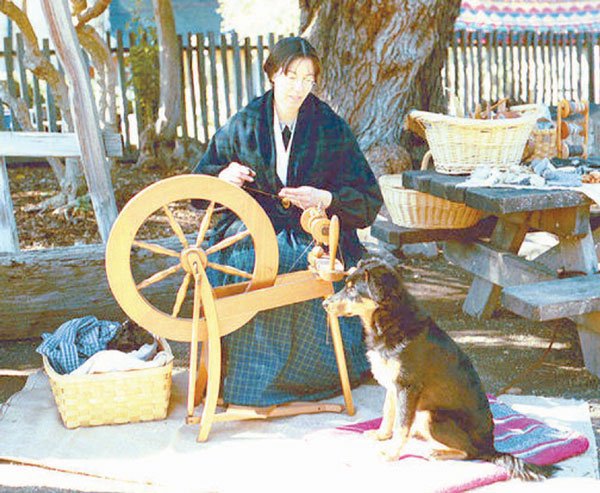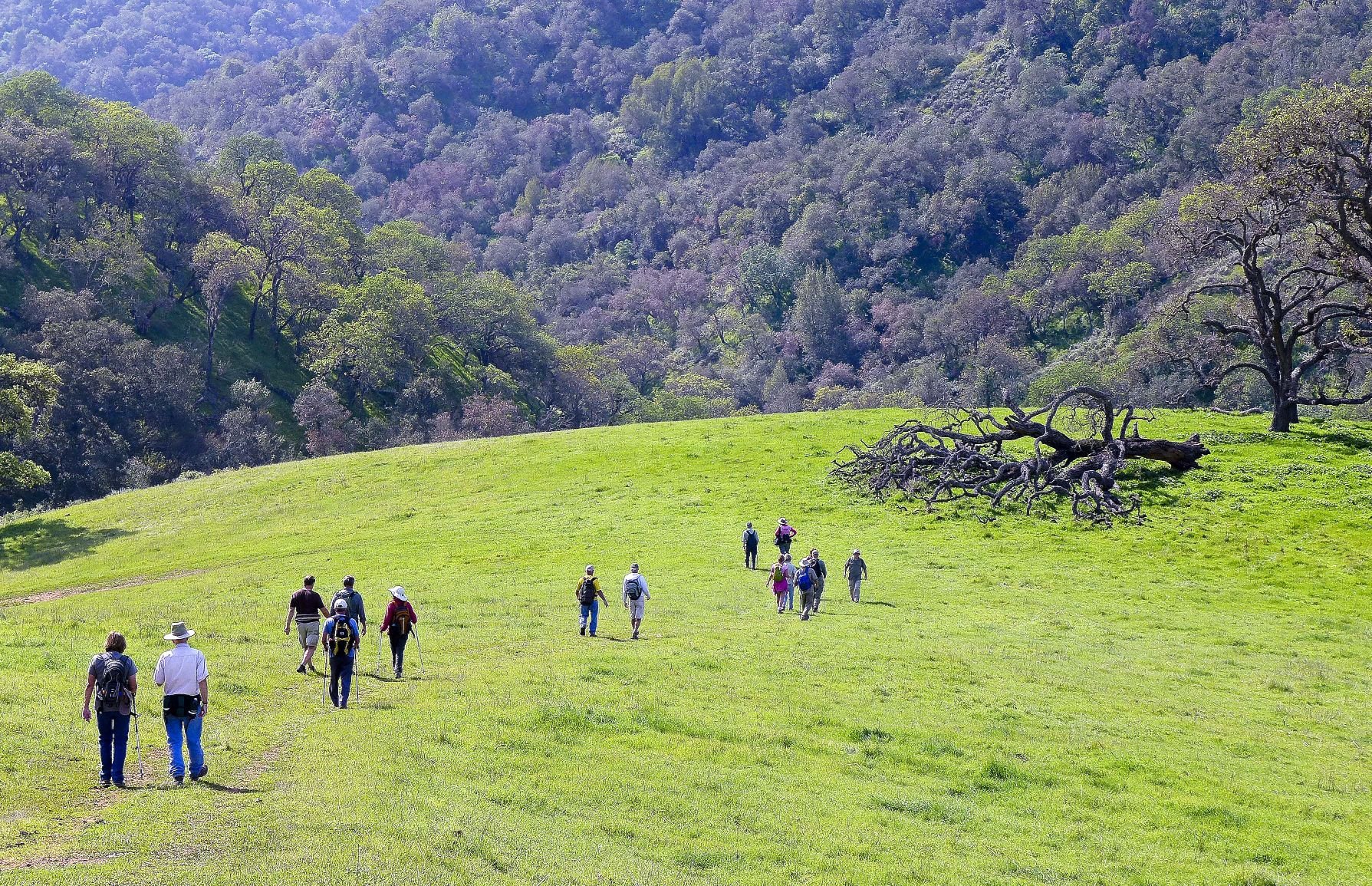Sarah and Alan Montgomery are somewhat of an odd couple these
days. She cards wool, spins yarn and sews all of their clothing by
hand. He’s been working on a yolk for their new oxen, since Butch
and Sundance are already too large for the old one. They’re
semi-nomadic, traveling from place to place in a covered wagon,
recounting their journey over the Sierra Nevada to California’s
golden shores
… 160 years ago.
Sarah and Alan Montgomery are somewhat of an odd couple these days. She cards wool, spins yarn and sews all of their clothing by hand. He’s been working on a yolk for their new oxen, since Butch and Sundance are already too large for the old one. They’re semi-nomadic, traveling from place to place in a covered wagon, recounting their journey over the Sierra Nevada to California’s golden shores … 160 years ago.
Okay, they may not actually be the Montgomerys, but Morgan Hill couple Bruce Horttor and Carol Verbeeck do put on quite a show in character. For most of the year they run their own construction business, Building the Equestrian Dream, but for about eight weeks each spring, the husband and wife team is transformed. With period literature and actual pioneer accounts to guide them, the couple have built and stocked their own covered wagon, which they use to educate children in third through fifth grades about pioneers in the American west.
“I guess it’s a hobby that ran amok,” said Horttor, referring to the chain of events that led here. In 1986 the couple began volunteering to drive their draft horse, Ben, for Living History Days at the San Jose Historical Museum. Hitching their horse to different vehicles was fun, but the couple wanted to have their own wheels. They built the wagon, but couldn’t stop there.
Verbeeck, a former educational researcher began researching the sorts of things that settlers might have with them at the time.
“I think the program started as an extended show-and-tell,” said Verbeeck. “All of us, whether we’re kids or adults, are interested in stuff, but in a museum that stuff is generally broken up and under glass. Here they can touch them, so they can look and really picture what life was like.
“The story of the west has become so romanticized. Natural beauty and grandeur aside, it was a time of hardship and loss, too. Overland travelers suffered illness and injury. They got lost. They starved.”
The couple chose to focus on the Stephens-Townsend-Murphy Party of 1844, the first group to open the Truckee route to California, partially because everyone in the group, including two babies born on the trail, survived.
To better understand the people they’re portraying, Horttor and Verbeeck have spent a lot of time doing what they call experiential archaeology. Not only have they camped out in the wagon (for periods from one night up to one week), they’ve attempted to make as much of the experience as possible true to life for a westbound family.
“I’ve really made soap from a pig we really raised and Bruce really slaughtered,” said Verbeeck. As for sewing, “In the 1840s everything had to be hand sewn. The average family didn’t have a hand crank or even a treadle sewing machine. You really appreciate the things you make when you realize that everything you’re wearing and that your husband and children are wearing, you sewed.”
Verbeeck said her attempts at hand-construction have been successful, to a point. Despite years of sewing experience, she still feels that her stitches look sloppy next to the perfection of the period pieces she’s been able to see. The same is true for her husband, whose own particular interest is in blacksmithing.
“You learn from those old iron pieces,” said Horttor. “I dug an old, worn out pick that was hand-made up out of the dirt and hung it on the wall. Every now and then I look at it and marvel at how it was made.”
For museum trips, like “First Saturday” living history day at the San Juan Bautista State Historic Park, Horttor brings along his nail-making forge as an added treat for wagon visitors.
The couple tries to add something new each year, and 2004’s addition was a period-appropriate companion.
Sadie, their English Shepherd, is the type of dog settlers would most likely have taken with them on their overland journey. Known for their strong herding and hunting instincts as well as their loyalty and desire to stay close to home, the dogs made perfect traveling companions.
Though their supply of wagon goods is burgeoning, the couple isn’t inclined to cut stuff out.
“About the time we think of leaving something out of the story or shortening it, we get a note that says that was the favorite part for one of the kids,” said Horttor.
Horttor and Verbeeck already have several bookings taken up for the spring, but dates are still available for new schools, they said. Verbeeck will also be debuting a one-woman educational program called “The Politics of Wool” in March. The colonial-themed talk will cover boycotts, taxes, revolution, spinning and the “Daughters of Liberty.”
For more information, visit www.TheCaliforniaTrail.com/GoWest or e-mail Go****@****ic.com.













